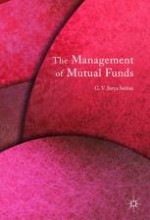2017 | OriginalPaper | Buchkapitel
2. Review of Literature
verfasst von : Dr. G. V. Satya Sekhar, MBA,Ph.D
Erschienen in: The Management of Mutual Funds
Aktivieren Sie unsere intelligente Suche, um passende Fachinhalte oder Patente zu finden.
Wählen Sie Textabschnitte aus um mit Künstlicher Intelligenz passenden Patente zu finden. powered by
Markieren Sie Textabschnitte, um KI-gestützt weitere passende Inhalte zu finden. powered by
